Occupational safety training for the chemical industry according to Decree 44
99,000 ₫
Note: The above price is calculated per person, the price may vary depending on the number of trainees participating in the course and market fluctuations. For more accurate pricing support, please refer to the quotation or contact our consultants directly.
The Chemical Industry Safety Training course is a course that provides Group 3 occupational safety knowledge. The course will raise awareness on how to prevent workplace accidents during chemical manufacturing operations for trainees. Accordingly, the occupational safety training content closely follows Article 18 Decree 44/2016/ND-CP.
Table of Contents
Toggle1. Overview of the chemical industry according to Decree 44
a. What is the chemical industry?
- The chemical industry is an industry that produces chemical products, including organic and inorganic substances. This industry involves many complex processes to create essential products for society, including consumer products, raw materials for many different industries, and medicinal substances.
- The chemical industry is one of the most important and diverse industries in the world. It produces a wide variety of different chemicals, from organic substances like ethanol and formic acid to inorganic substances like alloys and metals.
- The chemical industry plays an important role in the advancement of many other industries, including the oil and gas industry, food industry, medical industry, and construction industry. It is also an important source of energy and raw materials for countries around the world.
- However, chemical production also has some negative impacts on the environment and human health, including environmental pollution and the generation of toxic substances. Therefore, chemical manufacturers must comply with environmental and product safety regulations to keep the environment and people safe.

b. Types of chemical manufacturing machinery
Machinery and equipment for chemical manufacturing are among the important factors in the chemical manufacturing process. We need to choose the right type of machinery and equipment that suits the manufacturing process to ensure quality and safety. In chemical manufacturing, machinery and equipment must meet requirements such as: high quality, high durability, good control and management features, and safety. We need to ensure that the machinery and equipment comply with environmental and safety regulations. Depending on the specific manufacturing process, the types of machinery and equipment used may vary. For example, when producing chemicals with high pH levels, it will be necessary to use machinery and equipment that can withstand harmful chemical environments. In the chemical industry, many types of machinery and equipment are used to manufacture chemical products. Some of them include:
- Reactors: Used to create chemical products by generating chemical reactions.

- Distillation columns: Used to separate chemicals from each other by using the difference in their vapor pressure.

- Filters: Used to remove particles and other substances from chemical products.

- Pumps: Used to push chemicals through manufacturing processes.

- Heat exchangers: Used to exchange heat or transfer heat between chemicals.

- Storage tanks: Used to store chemical products after the manufacturing process is complete.

- Process control systems: Used to control and manage chemical manufacturing processes to ensure quality and safety.

c. Typical enterprises in the chemical industry
Typical enterprises in the chemical industry in Vietnam include:
- PetroVietnam Ca Mau Fertilizer Joint Stock Company (PVFCCo): Is one of the leading enterprises in the field of fertilizer production in Vietnam. The company was established in 2003 and has now developed into one of the largest enterprises in the chemical industry in Vietnam.
- Binh Son Refining and Petrochemical Company Limited (BSR): Is one of the leading oil processing companies in Vietnam. This company owns the Dung Quat refinery with an annual refining capacity of about 6.5 million tons.
- Duc Giang Chemical Joint Stock Company (DGC): Is one of the companies that manufactures and supplies chemical products for many different industries such as fisheries, agriculture, textiles, footwear, plastics, packaging, construction, paint and printing.
- Sai Gon 3 Dyeing and Printing Company Limited (SGT): Is one of the leading textile and dyeing chemical manufacturing companies in Vietnam. SGT’s key products include various types of chemicals for the dyeing and printing process, including antiseptic chemicals, bleaching chemicals, coloring chemicals…
- Vinachem Joint Stock Company (VNC): Is one of the largest chemical corporations in Vietnam, specializing in producing and supplying chemical products for many different industries, including fertilizer chemicals, industrial chemicals, water treatment chemicals… The company also owns many other large chemical manufacturing enterprises in Vietnam.
d. Specific jobs in the chemical industry
Specific jobs in the chemical industry include:
- Research and development engineer: Researches and studies the chemical properties of compounds, develops new formulas, and improves manufacturing technology.
- Quality management engineer: Controls product quality, ensuring products meet quality standards.
- Manufacturing technician: Designs, operates, and checks the equipment and manufacturing systems in a chemical factory.
- Maintenance engineer: Responsible for repairing and maintaining equipment and manufacturing systems to ensure continuous and safe operation.
- Materials engineer: Researches and studies the properties of materials, develops new materials that meet manufacturing requirements.
- Occupational safety engineer: Ensures safe production for employees and the environment.
- Sales engineer: Approaches customers, consults on chemical products, and negotiates business contracts.
- Applied technical engineer: Researches and studies the application of chemical products in various industries, and provides optimal solutions for customers.
e. Products in the chemical industry
The chemical industry is one of the industries that plays an important role in producing products for many different fields such as medicine, agriculture, industry, manufacturing, construction materials, and pharmaceuticals. Here are some key products in the chemical industry:
- Fertilizer: is a product that provides nutrients for plants to help increase agricultural product yield and quality.
- Pesticide: used to kill harmful insects in agriculture.
- Paint: is a type of colored solution that serves to decorate and protect surfaces.
- Plastic: is a material widely used in manufacturing plastic products, from packaging, toys to industrial products.
- Solvent: used to dissolve, dilute, and clean different substances in the industry.
- Water treatment chemicals: used to treat and clean water, helping the water meet standards and be safe for human health.
- Cleaning agents: used to clean surfaces, remove dirt, grease, and other impurities.
- Dyes: used to dye fabric and paper products, providing color and durability to the products.
2. Overview of the chemical industry safety training course
a. What is chemical industry occupational safety training according to Decree 44?
- Chemical safety training according to Decree 44 are learning sessions that equip workers with awareness of how to prevent labor accidents. Accordingly, those who work directly in the chemical industry are subjects belonging to group 3.
- The occupational safety training course will help workers recognize and prevent dangers, and limit the risks of labor accidents while working.
REGISTER FOR OCCUPATIONAL SAFETY TRAINING SERVICES
b. Training duration
- First-time safety training duration
- The total training duration is at least 24 hours, including test time.
- 8 hours of theoretical study on the system of policies and laws on occupational safety and health
- 8 hours of theoretical study on basic knowledge of occupational safety and health
- 4 hours of theoretical study on specialized training content
- 2 hours of practical study on specialized training content
- 2 hours of theoretical testing at the end of the training course
The safety training center will distribute the time into multiple training sessions depending on the time arrangement for the staff. But usually, there will be 6 training sessions, the course will take place over 3 days, on the condition that the manufacturing business can arrange continuous study time.
- Periodic safety training duration
- Before the occupational safety card expires, if workers want to have it re-issued, they must undergo a periodic occupational safety training course, with the periodic safety training duration being at least 50% of the first-time safety training duration.
Explanation: the total periodic occupational safety training duration is at least 12 hours, including test time. After completing the periodic training course and passing the test, workers will have their occupational safety cards re-issued or renewed.
c. Content of the training course
| No. | TRAINING CONTENT | TRAINING DURATION (HOURS) | |||
| Total | Of which | ||||
| Theory | Practice | Test | |||
| I | System of policies and laws on occupational safety and health | 8 | 8 | 0 | 0 |
| 1 | Overview of the system of legal documents on occupational safety and health. | 6 | 6 | ||
| 2 | System of technical standards and regulations on occupational safety and health. | 1 | 1 | ||
| 3 | Specific regulations of state management agencies on occupational safety and health when building new, expanding or renovating works, facilities for manufacturing, using, preserving, storing and inspecting types of machinery, equipment, materials, and substances with strict requirements on occupational safety and health. | 1 | 1 | ||
| II | Basic knowledge of occupational safety and health | 8 | 8 | 0 | 0 |
| 1 | Basic knowledge of dangerous and harmful factors in the workplace. | 4 | 4 | ||
| 2 | Methods to improve working conditions. | 1 | 1 | ||
| 3 | Safety culture in manufacturing and business. | 1 | 1 | ||
| 4 | Rights and obligations of employers and employees; policies and regimes on occupational safety and health for employees; functions and duties of the network of occupational safety and health officers. | 1 | 1 | ||
| 5 | Occupational safety and health regulations, signs, occupational safety and health instructions and the use of safety equipment, personal protective equipment; professional skills and first aid for labor accidents, prevention of occupational diseases. | 1 | 1 | ||
| III | Specialized training content | 6 | 4 | 2 | 0 |
| General knowledge about types of machinery, equipment, substances that generate dangerous and harmful factors; analysis, assessment, management of risks on occupational safety and health, safe working procedures with machinery, equipment, and substances with strict requirements on occupational safety and health. | 6 | 4 | 2 | ||
| IV | Safety training test at the end of the training course | 2 | 2 | 0 | 0 |
| Total | 24 | 22 | 2 | ||
See more training content of the 6 groups
d. Occupational safety training certificate
After completing the occupational safety training course and at the same time passing the test, the worker will be issued an occupational safety card (in practice, also called a group 3 occupational safety certificate).
In which, the card will clearly show information such as: full name, date of birth, specific job and working environment. At the same time, it also has the training duration, a red seal, and a signature confirming the completion of the training course.
According to the regulations on issuing safety cards specified in clause 2 of Article 24 of Decree 44/2016/ND-CP, there are 2 cases:
- In the case that the employer and the employee have a labor contract with each other, the employer must sign, seal and affix the seal on the safety card for the trained person belonging to group 3 after they have gone through the training course from the occupational safety training unit and have passed the test.
- In the case of freelance, seasonal workers who do not have a labor contract, the training unit must sign, seal and affix the seal on the safety card for the worker after they have gone through the training course from the occupational safety training unit and have passed the test.

3. Recognizing dangers in the chemical industry
Chemical manufacturing is an industry with many dangers. Some of the dangers of chemical manufacturing include:
- Impact on humans:
- Toxic substances: Toxic chemicals can cause harm to workers’ health and are a cause of various occupational diseases.
- Fire and explosion: Chemicals can cause fire and explosion when they come into contact with heat or self-ignite, which can cause burns to workers.
- Radiation: Some chemical manufacturing processes can cause radiation and cause harm to workers’ health and lead to diseases such as cancer, internal organ damage.
- Impact on the environment:
- Waste: Chemical manufacturing processes can create waste that needs to be handled carefully to avoid causing harm to the environment.
- During the chemical manufacturing process, factories can directly discharge wastewater into natural water sources and cause harm to the environment.
- Air pollution: Chemical manufacturing processes can cause air pollution and cause harm to workers’ health and the surrounding environment.
- Mold: Chemical manufacturing processes can cause mold and cause harm to the environment.

Managing and controlling dangers when manufacturing chemicals is very important to protect workers’ health and the environment. Safety and environmental standards need to be strictly complied with and applied to ensure safety.
4. Safety measures for the chemical industry
Safety measures when manufacturing chemicals include:
- Risk assessment: Assess and identify the risks of the chemical manufacturing process to be able to apply preventive measures and solve them early.
- Use protective equipment: Such as hearing protection, hard hats, protective clothing, and protective gloves.
- Liquids and gases: Use equipment to control and keep liquids and gases in a safe tank.
- Comply with manufacturing procedures: Comply with manufacturing procedures with safety and environmental standards.
- Occupational safety training: Train employees on safety measures when manufacturing chemicals.
- Material management: Manage chemical manufacturing materials with care and comply with safety regulations.
- Supervision and control: Conduct regular supervision and control to identify and solve any safety problems.
- Ready for emergencies: Have a plan for emergencies and support measures to quickly resolve incidents that may occur.
- Fire prevention: Use fire prevention equipment and try to avoid sources of explosion.
- Periodically organize occupational environment monitoring in factories and enterprises, collect and analyze harmful factors for workers, thereby adjusting the level of harm to prevent occupational diseases for them.

- Waste treatment: Treat waste reasonably and comply with environmental regulations.
- Quality assurance: Comply with quality standards and conduct periodic checks to ensure product quality.
- Monitoring system: Use monitoring and control systems to monitor and supervise the chemical manufacturing process.
- Expert consultation: Get consultation from safety and environmental experts to improve and enhance the chemical manufacturing process.
5. Accidents in the chemical industry
Chemical accidents are incidents that can occur when chemicals are manufactured or used, such as fires, spills into the environment, organic loss, and property loss. These accidents can have negative impacts on people’s health, the environment, and the economy.
- A specific example of a chemical accident is the Bhopal chemical accident in India in 1984. In this accident, a toxic chemical warehouse of a company escaped and caused health damage to hundreds of thousands of people and long-term environmental harm. This accident is considered one of the largest chemical accidents in history, and it reminds us of the need to protect safety when manufacturing and using chemicals.

- Chemical accidents can occur for many reasons, including a lack of compliance with safety regulations, a lack of strict control over the quality and use of chemicals, or due to natural incidents such as earthquakes or equipment malfunctions.
- Protecting safety and complying with relevant safety regulations is very important to avoid chemical accidents. Safety measures include complying with safety regulations, using safe and complete equipment, and providing quick first aid when an accident occurs.
6. Benefits of a chemical industry occupational safety card
An Toan Nam Viet provides businesses with the following great benefits after completing occupational safety training courses as prescribed in Decree 44/2016/ND – CP on occupational safety and health work for companies, factories, and enterprises.
- Workers can identify potential risks of labor accidents, thereby having preventive measures to avoid labor accidents.
- Your Business can establish risk prevention measures in the production, operation, and maintenance process.
- Minimize costs when occupational safety risks occur.
- Uninterrupted production will help increase labor productivity and product quality.
- Comply with occupational safety laws, avoiding legal risks.
- Create prestige and professionalism in all aspects, thereby enhancing the brand for your business.
The training courses of An Toan Nam Viet are the solution to prevent and combat external factors affecting each individual so that they can avoid danger that can lead to injury or, more seriously, death.
REGISTER FOR OCCUPATIONAL SAFETY TRAINING SERVICES
7. Customer feedback after completing the training course
An Toan Nam Viet has many years of experience in the mission of accompanying many businesses in Vietnam in general and in the southern provinces in particular. And that responsibility is something extremely valuable to An Toan Nam Viet, which is why An Toan Nam Viet’s Occupational Safety Training work is always focused on becoming more and more professional. And the motivation for An Toan Nam Viet to grow strongly to date comes from the positive and contributing feedback from businesses. Below is the feedback from our partners that we have served.
See more customer interviews after using An Toan Nam Viet’s services
8. An Toan Nam Viet’s Occupational Safety Training Capability in the chemical industry according to Decree 44
An Toan Nam Viet is a reputable and high-quality occupational safety training center in Vietnam today. With occupational safety training sessions held continuously at factories, manufacturing plants or construction sites throughout the southern provinces, mainly focusing on Ho Chi Minh City, Binh Duong, Dong Nai, and Ba Ria – Vung Tau.
REGISTER FOR OCCUPATIONAL SAFETY TRAINING SERVICES
- Occupational safety training license
- An Toan Nam Viet has been inspected and certified by the Safety Department of the Ministry of Labor – Invalids and Social Affairs to be eligible to operate occupational safety and health training. This further strengthens our occupational safety training capability.

- Documents and lectures
- Before occupational safety training documents are included in the occupational safety training courses, they have been reviewed and approved to ensure that the lectures are always correct in terms of knowledge and effective when applied.
- The teaching method of the lecturers is synchronized according to the teaching standards of An Toan Nam Viet, which is a method that experts in the field of occupational safety and health training have researched and drawn from the teaching process to bring the highest knowledge acquisition efficiency for learners.
- Lecturer in charge of the chemical industry occupational safety training course Cao Thi Hoang Luan

9. Reputable and high-quality national safety training center
- At An Toan Nam Viet, we always prioritize our professional dedication to occupational safety training. For us, imparting knowledge of self-protection to workers so they are safely equipped on their livelihoods is a contribution to building the country.
- To ensure effective training, we prepare carefully and meticulously for every little detail, no matter how small. From preparing tools, equipment, teaching aids to curricula, documents, sound, and lighting.
- Our occupational safety trainers are experts with many years of experience in the field. They even have research on identifying dangers in all occupations and how to prevent them.
- The trainers’ lectures are distilled from practical experience and conveyed in the most vivid and easy-to-visualize way for workers. These factors help workers feel comfortable during their study time and absorb our teaching knowledge well. Of course, the knowledge conveyed always closely follows Decree 44/2016/ND-CP.
- From there, they grasp many measures to prevent dangers and how to protect themselves. At the same time, they can apply it in the most appropriate way in their actual work.
- Our safety training center is proud to be a reputable and professional provider of occupational safety training services with the following advantages:
- Competitive training costs but training quality is still guaranteed.
- Flexible training schedule adapted to the company’s production situation.
- Quick occupational safety training certification procedures, in accordance with the law.
- Trainers are people with many years of experience in the profession.
- The classroom is controlled for factors affecting the training process, increasing teaching efficiency and the effectiveness of knowledge absorption for students.
- The lectures are compiled to be suitable for occupational safety work at businesses.
- An Toan Nam Viet works with dedication and professionalism to support customers accurately and quickly.

10. Reference more occupational safety training documents
11. Occupational safety training activities
- CICOR VIETNAM CO., LTD
- BUILD-UP VIETNAM CO., LTD – BRANCH 2
- CENTER FOR INSPECTION, VERIFICATION AND QUALITY SERVICES
- CENTER FOR CLEAN WATER AND RURAL ENVIRONMENTAL HYGIENE OF QUANG BINH PROVINCE
- AN TAM CONSTRUCTION AND TRADING CO., LTD
- MINH HAI EXPORT GARMENT CO., LTD
- PROQC VIETNAM INSPECTION CO., LTD
- HA GIANG BRANCH – VINPEARL JOINT STOCK COMPANY (FOUR POINTS BY SHERATON HA GIANG HOTEL)
- TAN A NGHE AN MANUFACTURING AND TRADING ONE MEMBER CO., LTD
- DULIN INTERNATIONAL INVESTMENT IMPORT EXPORT CO., LTD
- KHOA THUONG BIOTECHNOLOGY CO., LTD
- KON TUM WATER SUPPLY JOINT STOCK COMPANY
- TOI NGUYEN CONSTRUCTION AND TRADING ONE MEMBER CO., LTD
- HOANG MINH HUY MANUFACTURING TRADING CO., LTD
- AN TAM CONSTRUCTION AND TRADING CO., LTD (Project in Binh Duong)
- P. DUSSMANN VIETNAM CO., LTD (Project in Tan Phu – HCMC)
- P. DUSSMANN VIETNAM CO., LTD (Project T6.25)
- HT VINA INVESTMENT JOINT STOCK COMPANY
- HOGETSU VIETNAM CO., LTD
- CICOR VIETNAM CO., LTD
- LIEN KHUONG BRANCH – PETROLIMEX AVIATION FUEL JOINT STOCK COMPANY
- HUA CHANG VINA SCIENCE AND TECHNOLOGY CO., LTD
2 reviews for Occupational safety training for the chemical industry according to Decree 44
No comments yet

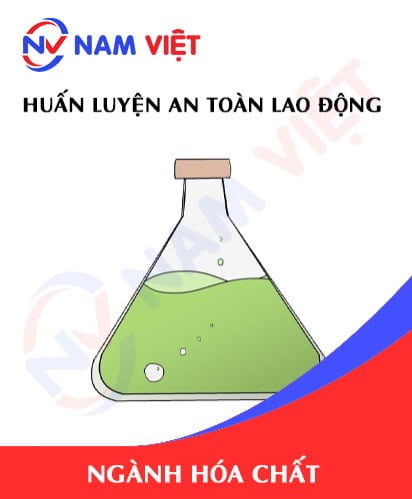
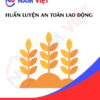
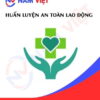
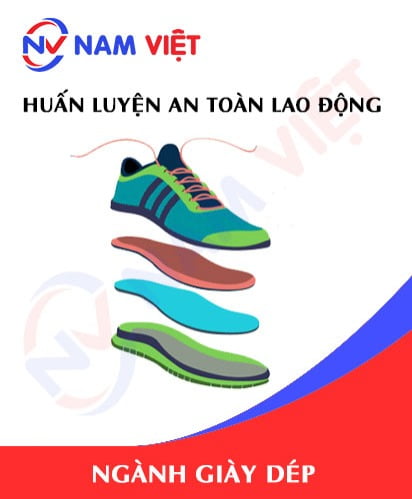
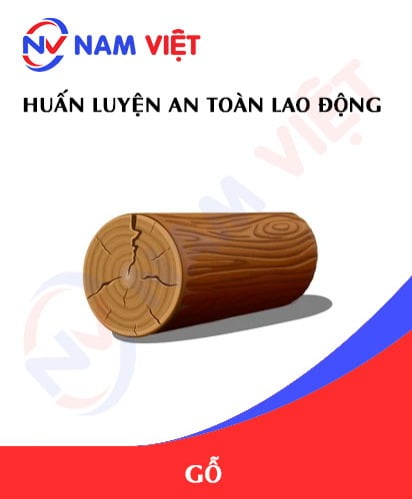
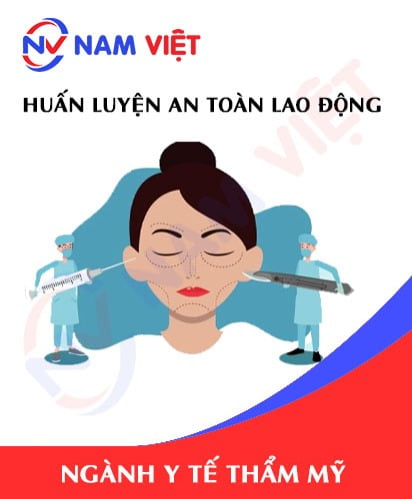
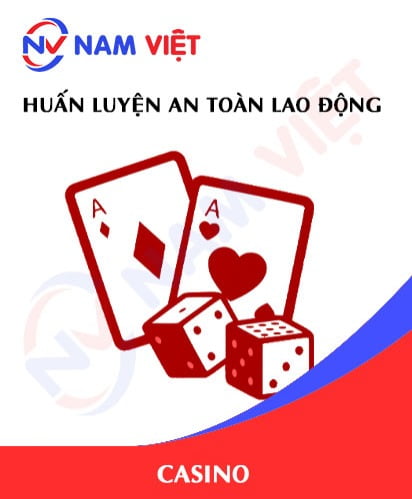
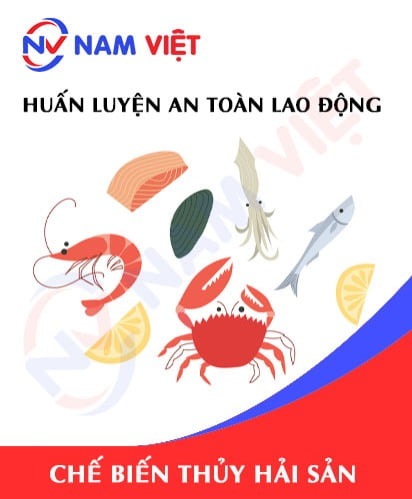
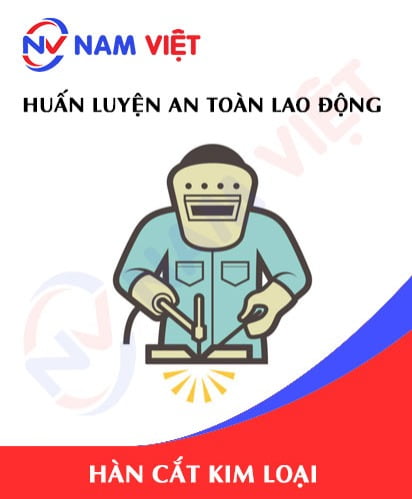


huynhtran_dathien22
Sự đóng góp tích cự của Nam Việt cho an toàn lao động tại Việt Nam là không thể chối cãi. An Toàn Nam Việt đã trao món quà về sức khỏe lao động cho công nhân của chúng tôi, để họ có thể bảo vệ bản thân mình. Thay mặt Anh/Chị/Em công nhân, tôi gửi lời cảm ơn đến công ty Nam Việt rất nhiều.
aimy_huynh_animo
Tư vấn rất sâu sắc, giúp tôi giải quyết những khó khăn về chuyên môn trong lĩnh vực huấn luyện an toàn.